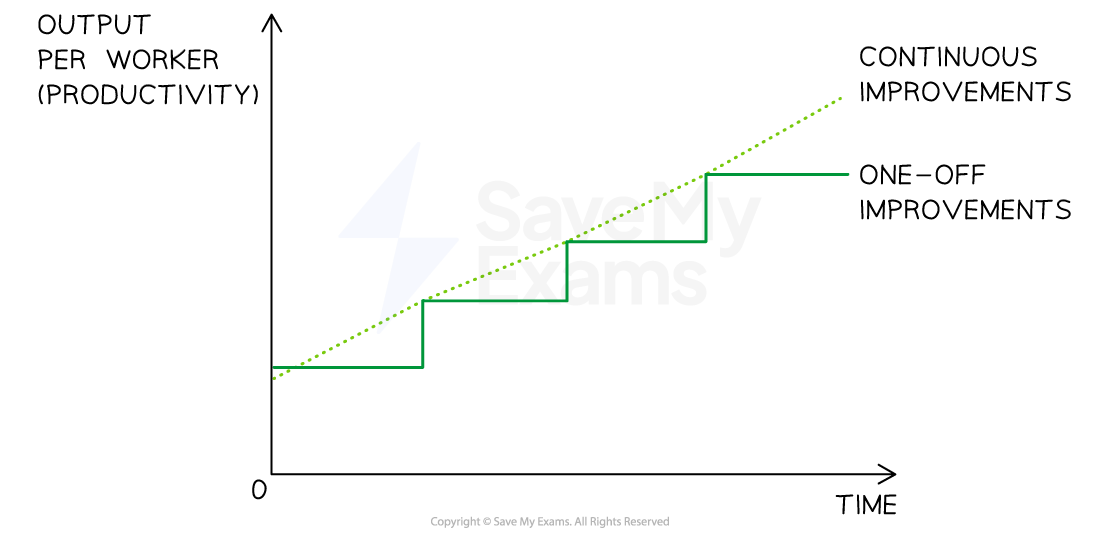Efficiency in Production (AQA GCSE Business)
Revision Note

Author
Lisa EadesExpertise
Business Content Creator
An Introduction to Lean Production
Lean production involves the minimisation of the resources used in production
Less time is required as the production process is organised in the most efficient way
Fewer materials are used as there is a focus on waste reduction
Less labour is used as lean production is typically capital intensive
Little space is required for production and storage
A small number of trusted suppliers work closely with the business
Efficiency gains through the use of lean production are likely to lead to a competitive advantage
Lower unit costs are achieved due to minimal waste, so prices may be lower than those offered by competitors
Better quality of output is likely as a result of supplier reliability and carefully managed production processes
However, lean production requires very careful coordination
Suppliers must be capable of responding very quickly to stock requests
Workers need to be motivated and flexible, capable of switching between a variety of tasks and constantly alert to changes they can make to improve efficiency
Managers need to maintain excellent relationships with workers to avoid disruptions to production
Equipment and machinery need to be well-maintained
Quality issues need to be identified and corrected swiftly, requiring effective quality assurance processes to be implemented and monitored constantly
All workers have a responsibility for quality, so ongoing training is vital
Elements of Lean Production
Lean production uses strategies such as just in time production and Kaizen
Just in time production
Just in time production means that the business only manufactures products when a customer confirms an order for them
This reduces the need for storage, as stock is only ordered to arrive when needed and products only made when there is demand
Kaizen
Kaizen involves taking continuous steps to improve productivity
Changes are small and ongoing, rather than significant one-off changes
It requires a long-term management commitment to change as well as flexible workers fully engaged in continuous improvement
Diagram: How Kaizen Works

Kaizen Versus One-off Improvements
Elements of Kaizen commonly include:
Zero defects in manufacturing
Capital-intensive methods using advanced machinery
High levels of cooperation between workers and management
Exam Tip
A common misconception is that lean production is an alternative to job or flow production. Lean production is not a production method, but rather a whole-business philosophy that is absolutely focused on minimising waste at every level.

You've read 0 of your 0 free revision notes
Get unlimited access
to absolutely everything:
- Downloadable PDFs
- Unlimited Revision Notes
- Topic Questions
- Past Papers
- Model Answers
- Videos (Maths and Science)
Did this page help you?